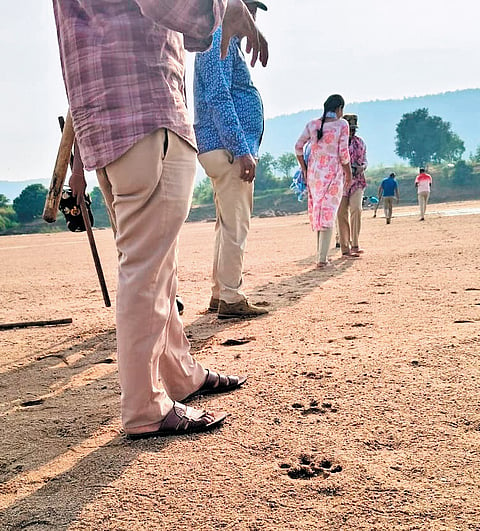

ADILABAD: After hosting a vibrant Bird Festival in March that attracted hundreds of nature lovers, Kawal Tiger Reserve is once again under the spotlight this time with the serene glow of the full moon on Buddha Purnima night.
In a first-of-its-kind initiative, a night-long wildlife census is in progress in the Utnoor FDPT Division from 6 pm on Monday and it will continue till 6am on Tuesday.
The exercise is being taken up, taking a leaf out of the well-established tradition of Maharashtra’s forests, where full moon nights are used to silently watch wildlife congregating at summer waterholes.
Adilabad District Forest Officer Prashanth Patil says census is not just a scientific exercise, but also a cultural response to a deeper issue.
Historically, the full moon night has unfortunately been associated with increased poaching activity in forest belts across central India. The wild animals become easy prey for poachers as they tend to gather at select waterholes in summer.
He said: “We aim to reverse the trend to make the full moon a night of protection, not of hunting.
To bring this idea to life, the forest department has mobilised wildlife enthusiasts and volunteers from across Adilabad, Karimnagar, Chandrapur, and Yavatmal creating a diverse, cross-border conservation community.
Five sensitive wildlife locations across Kawal have been carefully chosen for the exercise. In each of them, forest teams have already erected temporary ‘manchans’ or elevated platforms (observation posts) made from bamboo and local timber, artfully camouflaged with leaves and branches.
The volunteers, thoroughly briefed in advance, have been given strict advisories to ensure zero disturbance to the animals. There should not be lights, or loud whispers, or even mobile phone noises. Just eyes, ears, and a data sheet. Basic facilities like portable toilets and emergency kits have been discreetly stationed nearby.
Forest patrolling units are maintaining a quiet but constant vigil on the ground, adding another layer of safety and support.
The data collected, including time-tagged species observations will be compiled and analysed to serve as a valuable input for future conservation planning.
But, beyond the numbers, the night carries something deeper, a sense of shared guardianship, where citizens become silent witnesses to the secret lives of animals.
“This is our way of blending science with emotion,” said Patil, adding: “When people sit in complete silence for hours under the moonlight and see a sambar approach cautiously or a porcupine saunter past, they carry that memory forever.”
As interest in Kawal’s ecotourism potential continues to grow, such participatory initiatives are giving visitors more than just pictures - they’re offering purpose. The forest is no longer just a destination, it is becoming a community.